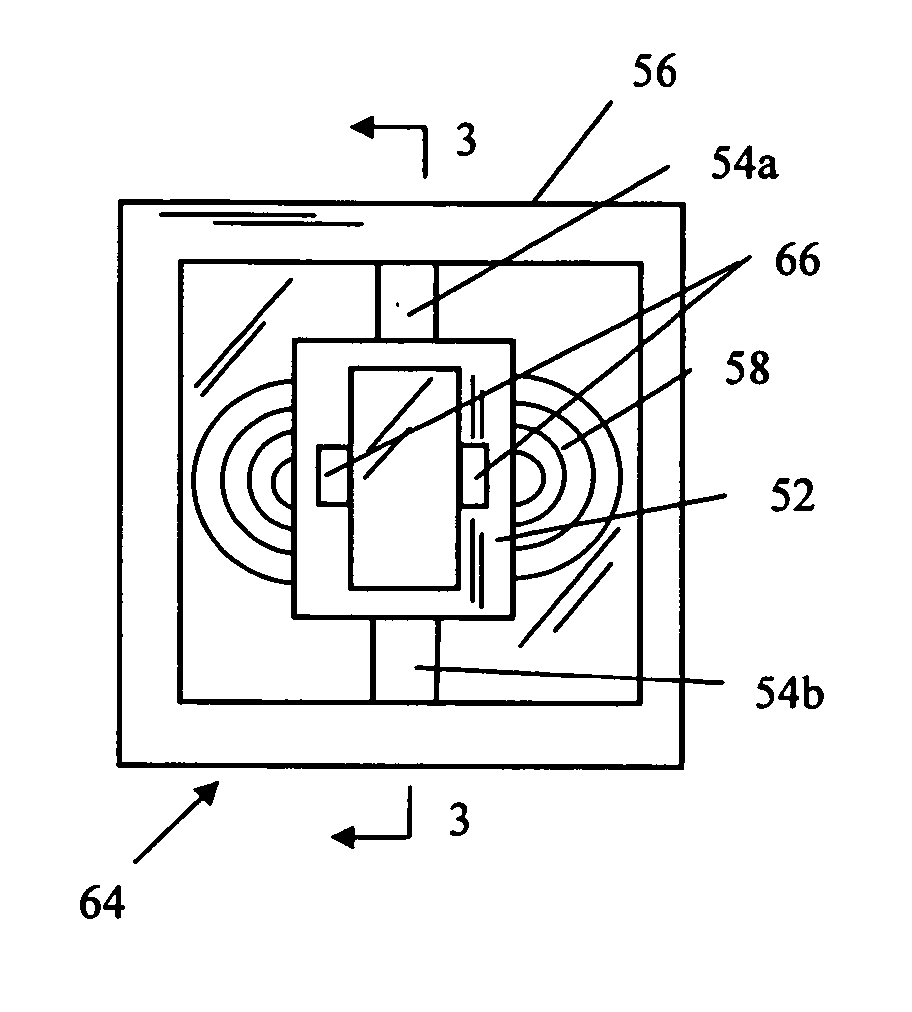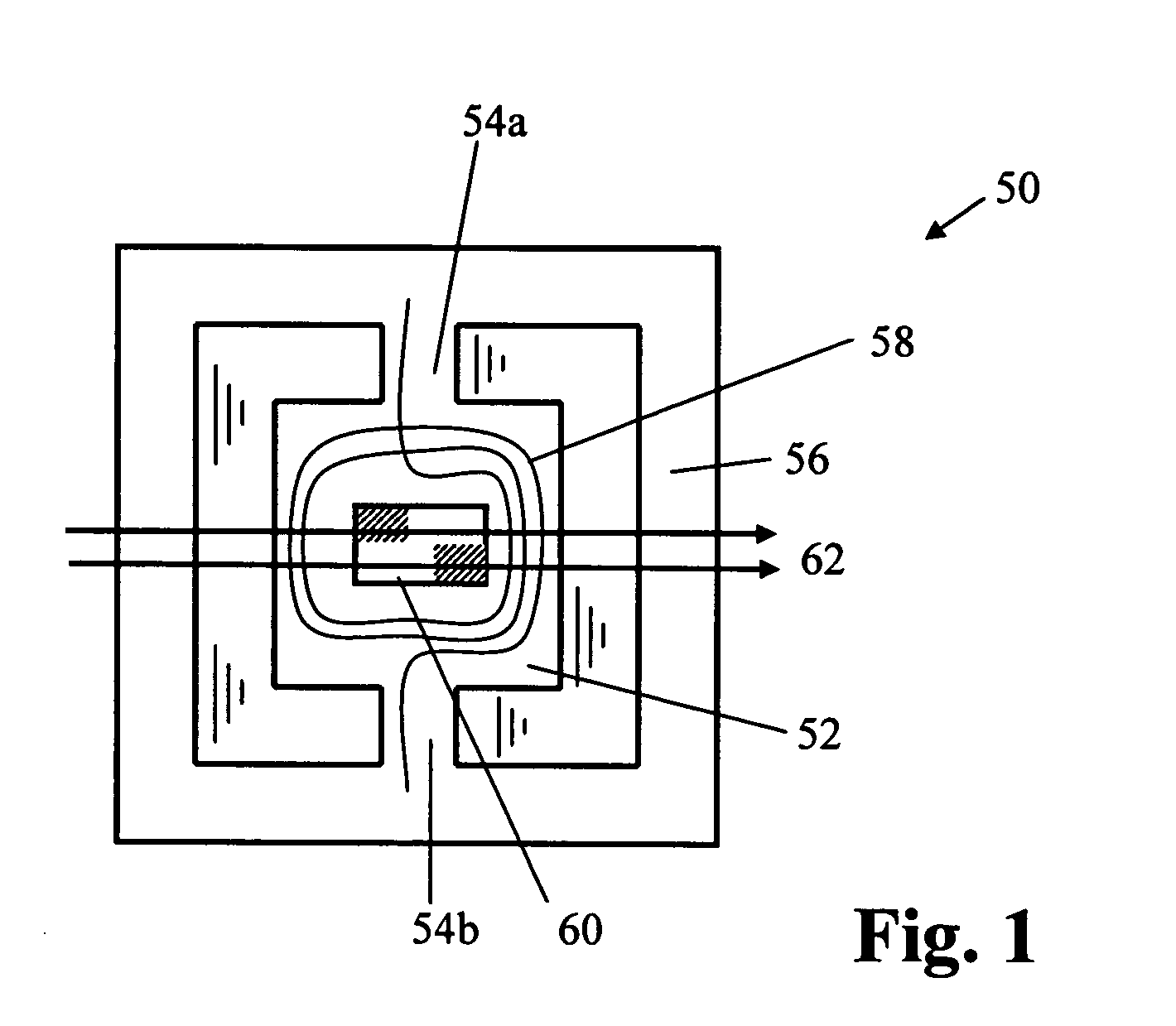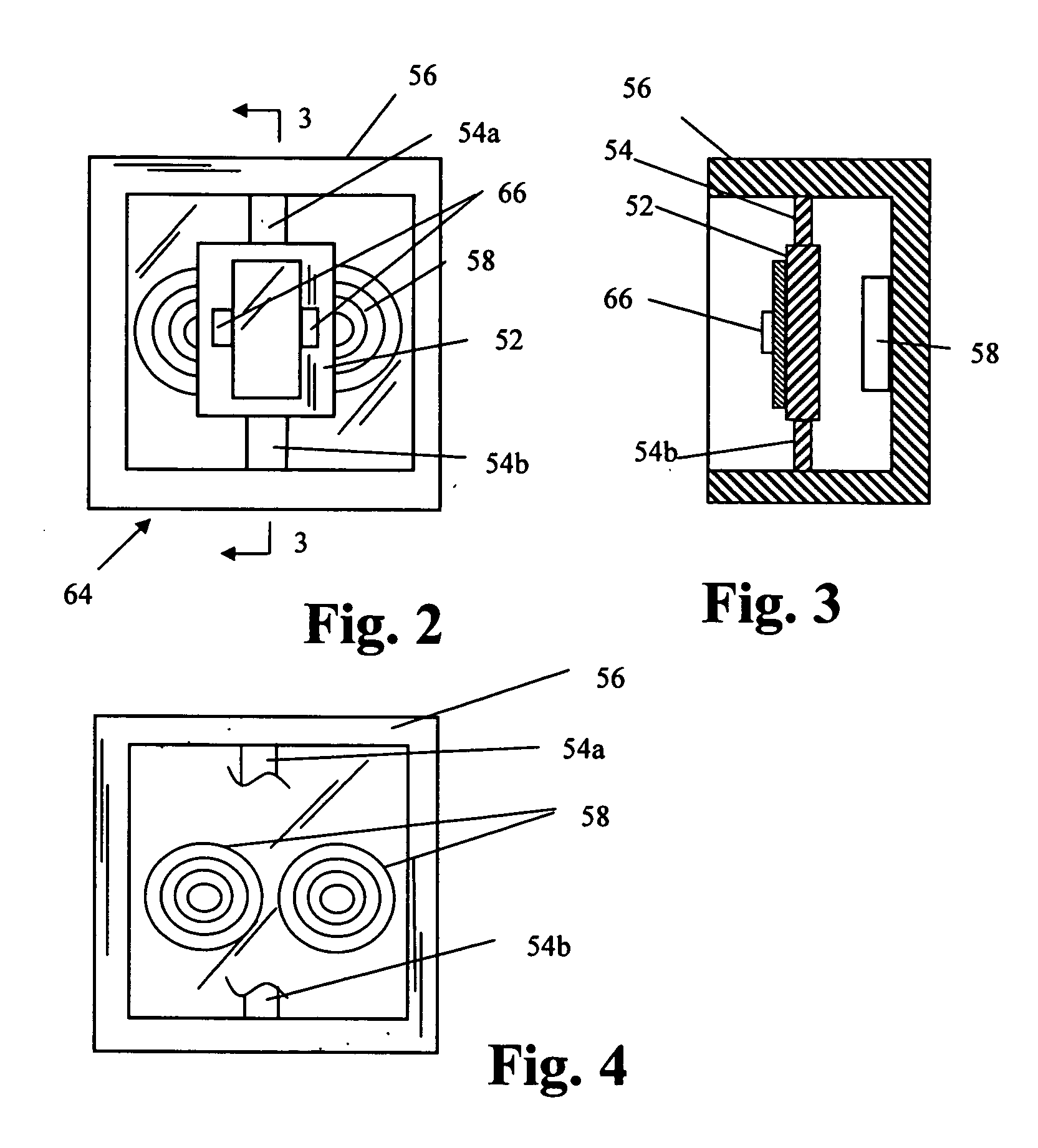Stationary coil oscillator scanning system
a scanning system and torsion oscillator technology, applied in the field of scanning systems, can solve the problems of inability to use scanning devices such as commercial or desktop laser printers, inferior to rotating mirror devices, material bulk, etc., and achieve the effects of improving performance, small size, and lack of expens
- Summary
- Abstract
- Description
- Claims
- Application Information
AI Technical Summary
Benefits of technology
Problems solved by technology
Method used
Image
Examples
Embodiment Construction
[0051] Preferred embodiments of the present invention utilize a torsion oscillator. The torsion oscillator 50 of FIG. 1 comprises a central generally rectangular plate 52 suspended by two extensions 54a, 54b of the material of plate 52. The plate 52 is generally symmetrical about its axis of oscillation. Extensions 54a, 54b are integral with a surrounding frame 56. Typically, the plate 52, extensions 54a, 54b and frame 56 are cut or etched from a single silicon wafer. A coil 58 of conductive wire and a mirror 60 or similar reflective surface are placed on the central plate. The mirror may be a smooth or polished surface on the silicon plate 52, since silicon itself is about sixty percent reflective Typically the mirror is a deposited layer of gold (or other material) on the smooth silicon substrate. Since the reflectivity of the silicon is wavelength dependent (falling off rapidly about 1 micron wavelength), a deposited mirror is typically used, or the raw silicon can be used withou...
PUM
 Login to View More
Login to View More Abstract
Description
Claims
Application Information
 Login to View More
Login to View More - R&D
- Intellectual Property
- Life Sciences
- Materials
- Tech Scout
- Unparalleled Data Quality
- Higher Quality Content
- 60% Fewer Hallucinations
Browse by: Latest US Patents, China's latest patents, Technical Efficacy Thesaurus, Application Domain, Technology Topic, Popular Technical Reports.
© 2025 PatSnap. All rights reserved.Legal|Privacy policy|Modern Slavery Act Transparency Statement|Sitemap|About US| Contact US: help@patsnap.com



